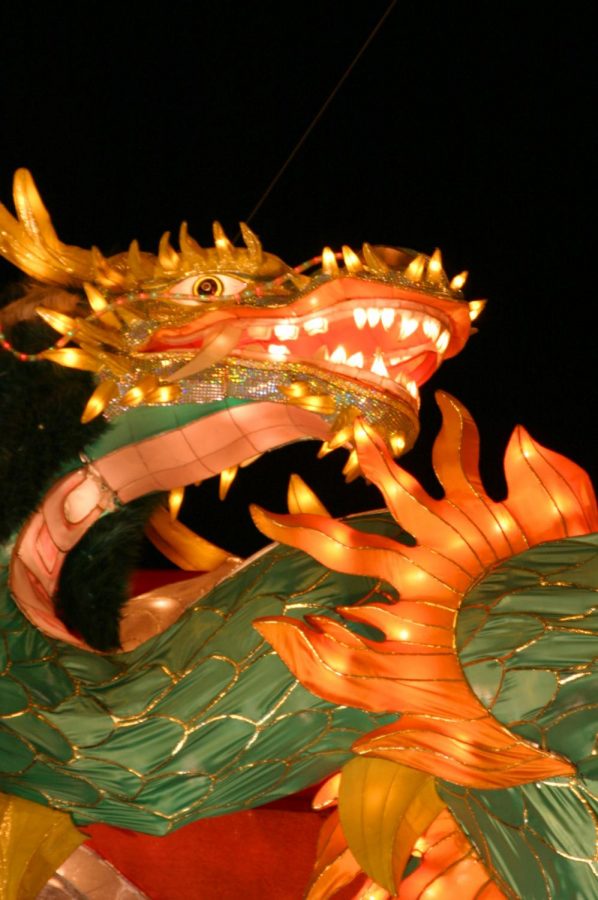‘The year of the dragon’ welcomed with tradition
January 26, 2012
Chinese legend has it that long ago a large-mouthed monster by the name of Nian preyed on people at night before every New Year.
The beast had the ability to swallow multiple people at once. The Chinese people were very afraid of Nian. One day an old man emerged, offering to control the monster. After rebuking Nian, the dragon began to swallow only the beasts of prey on earth.
The old man was later revealed to be an immortal god, and he vanished riding Nian into the distance. With the monster gone, people began to live normally once again. However, before the old man left, he told the people to place the color red on their doors at each year’s end. In case Nian ever got loose, red was the color that the monster feared most. Guo Nian, once meaning Survive the Nian, now means to celebrate the New Year.
This legend, told by Linlin Zhang at an honors program Chinese New Year luncheon, is one that reminds people of the origin of the Chinese New Year. This holiday-also called Spring Festival-is considered similar to the American Christmas and New Year’s Eve celebrations.
“We celebrate in many of the same ways as people do here in America,” said Zhang, instructor of Mandarin at UNA. “We have so much in common; people just don’t know it.”
In preparation for the New Year, it is considered important to clean the house thoroughly, sweeping away any bad luck that lies in the home. Red decorations such as lanterns, paper cuts, and paint cover the doors and window panes of many homes in China.
Another tradition for Chinese families during the New Year is the preparation of food. Dumplings are among the most common foods eaten at this time. The older generations sometimes place a coin in a dumpling, and whoever receives that one is said to have good luck for the coming year.
On the night before a New Year, families gather together and take part in eating the festive foods, playing games such as Chinese poker, watching the Chinese New Year program and lighting firecrackers, which are all red. Children usually receive a red envelope full of money and other gifts from older generations. The night is also celebrated by cheering and popping a bottle right as the clock strikes midnight.
“My favorite part of the New Year as a child was receiving the red envelope,” said Xuetong Li, vice president of the Chinese Student Organization. “Now that I am older and I don’t get an envelope anymore, my favorite part is probably the many shopping sales going on during this time.”
According to both Li and Zhang, the start of Chinese New Year changes every year because it is dictated by the lunar calendar. This year, the New Year fell on Jan. 23. Every year is associated with one of the 12 animals of the Chinese zodiac. This year is the year of the dragon, and people born during this year are said to have the characteristics the dragon represents. The dragon signifies stateliness, luck and power.
“We perceive the dragon differently than Americans do,” said junior Lu Hao. “We do not see him as dangerous or scary, but rather powerful and lucky.”
The Chinese believe that the gods and goddesses have blessed the dragon.
The year of the dragon comes once every 12 years, just as all of the other years from the Chinese zodiac.
The Chinese New Year is celebrated in many ways that are similar to those of American traditions. Chinese students at UNA will be bringing in their New Year by celebrating Feb. 15 at 6 p.m. in the GUC banquet hall. Anyone wanting to experience this Spring Festival is welcome to attend.












